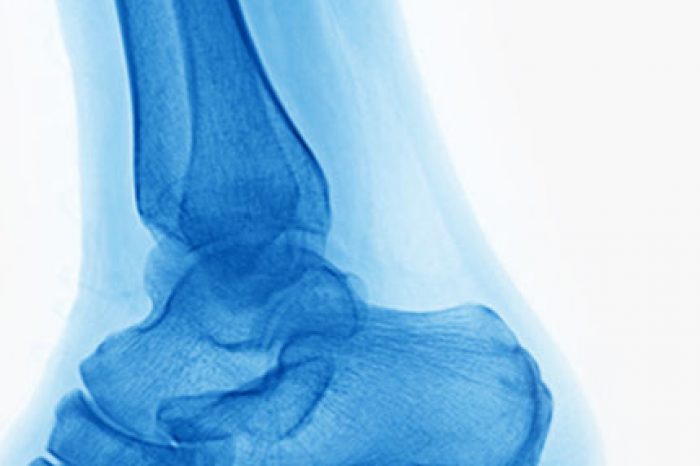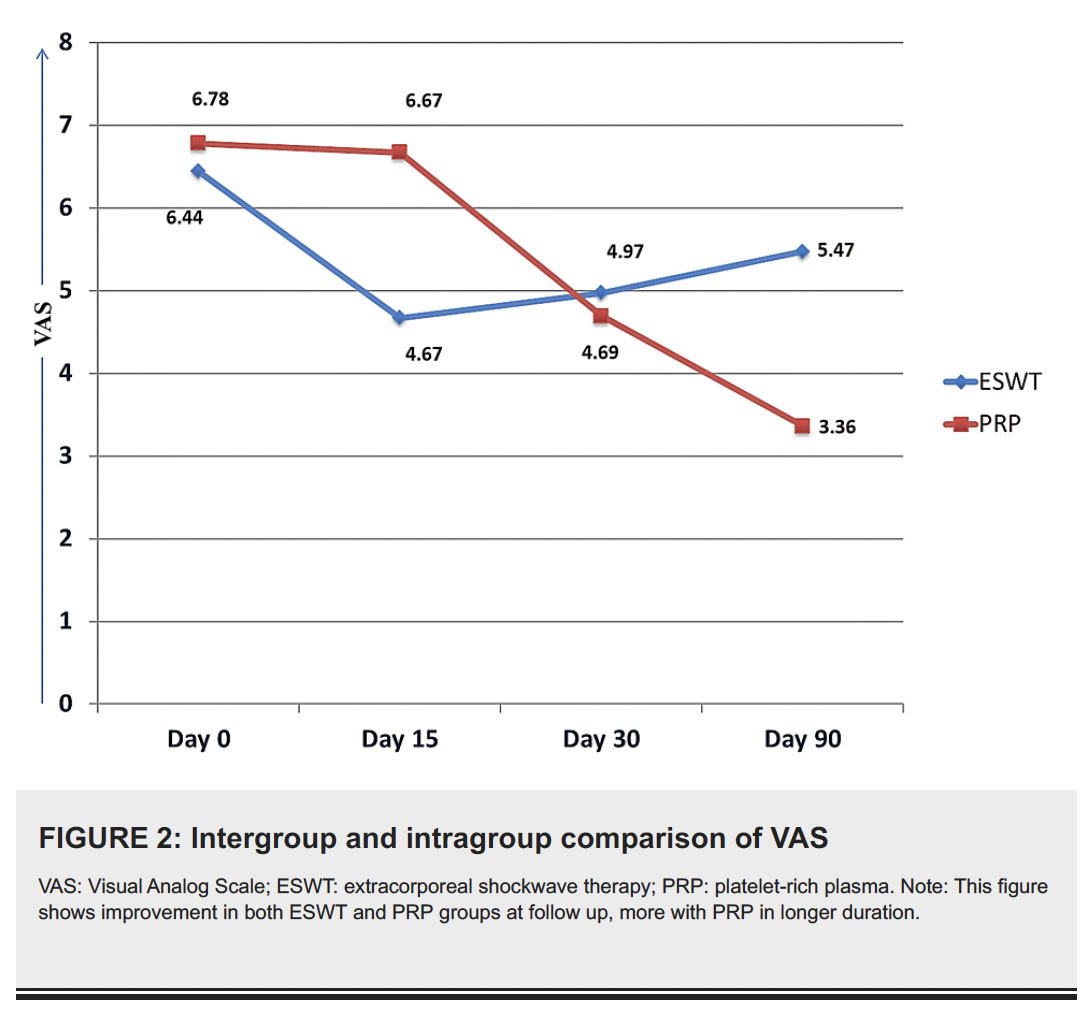

Chronic plantar fasciitis is a common and often debilitating condition affecting individuals from various backgrounds, including athletes, military personnel, and those with prolonged standing occupations. When conservative treatments fail, advanced interventions like extracorporeal shockwave therapy (ESWT) and platelet-rich plasma (PRP) injections are commonly considered. A recent randomized controlled trial from a tertiary center in Eastern India sought to compare these two treatments, analyzing their effectiveness based on pain relief, functional improvement, and changes in plantar fascia thickness.
Patient Selection Criteria In a recent study by Pandey et al. (2023) included 72 patients, aged 18-65, suffering from chronic plantar fasciitis for more than two months and with a pain intensity of at least 5 on the Visual Analog Scale (VAS). For patients to be included in this study, they were required to have failed conservative treatment, including physiotherapy, NSAIDs, and orthotic interventions. Those with systemic inflammatory diseases, prior foot surgery, neurological disorders, uncontrolled systemic diseases, or contraindications to ESWT or PRP were excluded.
Treatment Modalities
Outcomes and Efficacy Patients were assessed at baseline and at 15, 30, and 90 days post-treatment using the VAS, the American Orthopedic Foot and Ankle Society (AOFAS) score, and ultrasonographic measurement of plantar fascia thickness (PFT).
Pain Relief (VAS Scores)

Plantar Fascia Thickness Reduction (PFT Measurements)
Conclusion The study confirms that both ESWT and PRP are effective for chronic plantar fasciitis, but their benefits vary over time. ESWT provides more immediate pain relief, making it suitable for patients seeking short-term improvement. PRP, on the other hand, demonstrates superior long-term benefits in pain reduction, functional recovery, and plantar fascia healing.
For patients requiring faster relief, ESWT may be preferred, while
PRP maybe a better option for sustained recovery. One major limitation in this study is the authors only used a single shockwave session and a low dose PRP preparation with no analysis of the PRP dose. Both interventions were a lower dose that other studies have recommended, and follow up was short at only 90-days and effects of these treatments often take longer to see full results.
Future studies could explore the combined use of these therapies for optimized outcomes.
References
Pandey S, Kumar N, Kumar A, Biswas A, Sinha U, Pandey J, Ghosh S, Das S, Johnson RA, Kumar R, E V A, Kumari K. Extracorporeal Shockwave Therapy Versus Platelet Rich Plasma Injection in Patients of Chronic Plantar Fasciitis: A Randomized Controlled Trial From a Tertiary Center of Eastern India. Cureus. 2023 Jan 31;15(1):e34430.
(781) 591-7855
20 Walnut St
Suite 14
Adductor longus selective tenotomy is a modern surgical treatment for chronic groin pain that offers faster recovery and better outcomes than traditional full release surgery. The adductor longus, an inner thigh
Read MoreDiscover how ultrasound helps diagnose plantar fat pad atrophy, a leading cause of ball-of-foot pain. Learn about symptoms, thickness cutoffs, and why early detection matters for relief.
Read More